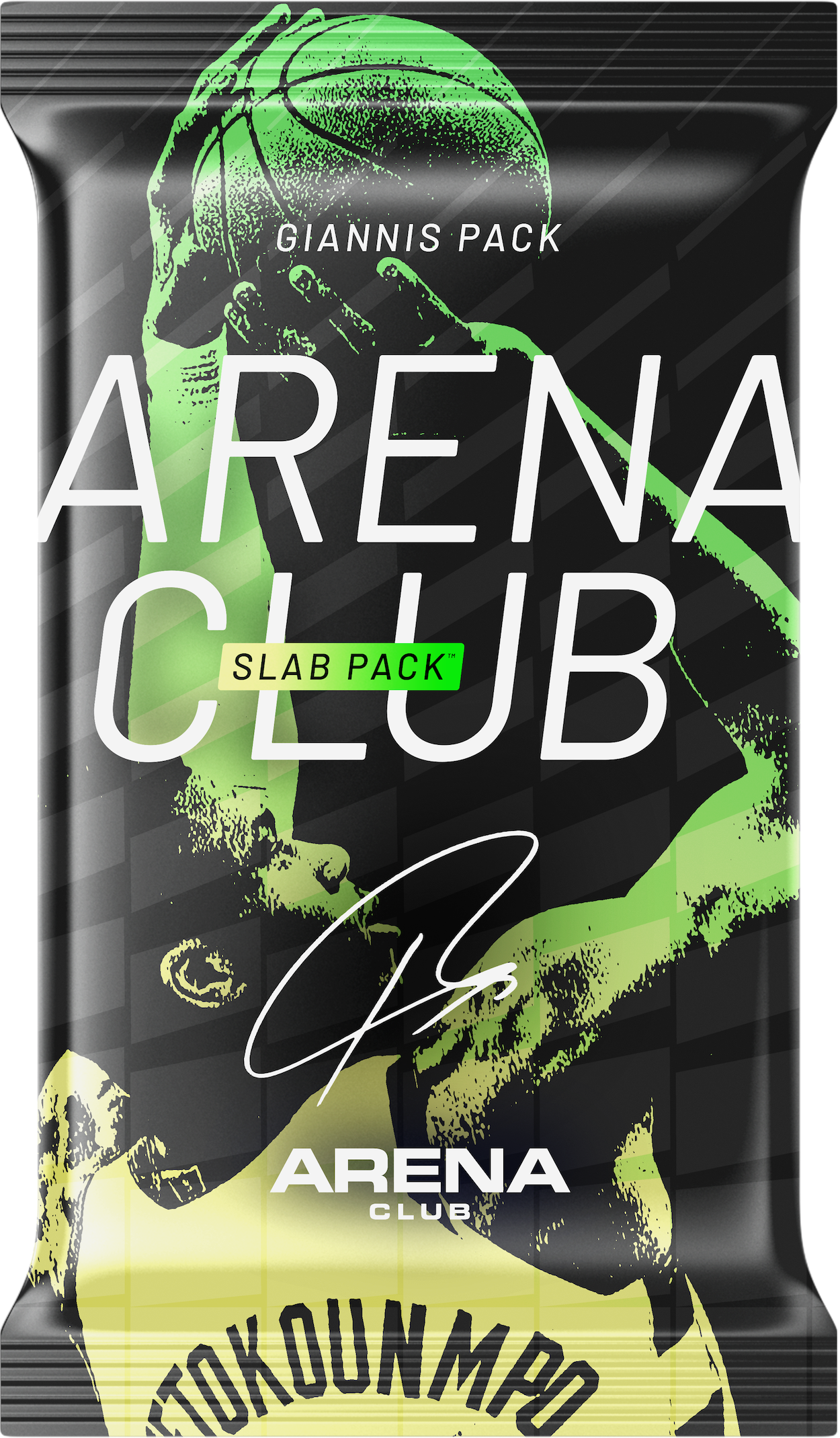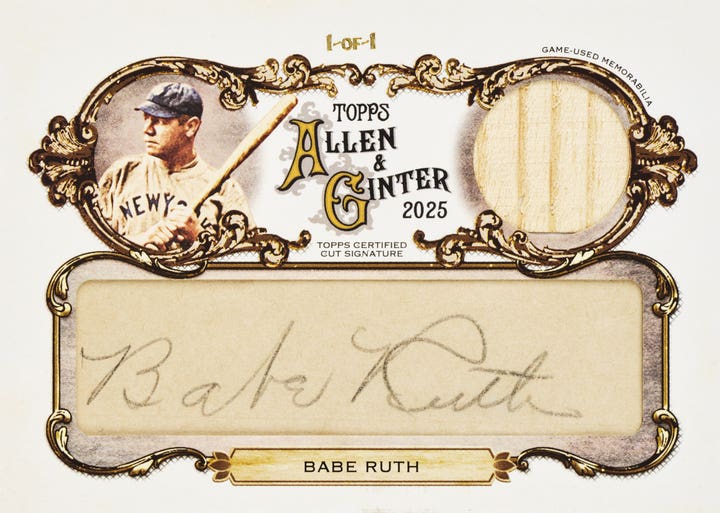Joe Namath
1965 Topps Football: One League Headlined by One Man
By John McMurray
If there is an unofficial collector favorite for the best football card set of the 1960s, the 1965 Topps Football card set would surely be it. With oversized cards, a colorful presentation and, most consequentially, the rookie card of Joe Namath, the 1965 Topps set is a clear cut above the Topps issues from 1964, 1966 and 1967, which also featured only American Football League (AFL) players.
But it also feels odd that the most memorable football set of the 1960s did not include cards of future Hall of Famers Jim Brown, Mike Ditka, Paul Hornung, Sonny Jurgensen, Bart Starr or Johnny Unitas. Those players appeared only in the set issued by Philadelphia Gum that year, a standard-size issue of National Football League players. Instead, 1965 Topps Football included the rookie card of Willie Brown, cards of Bobby Bell and Len Dawson and one of the finest George Blanda cards ever produced.
About a third of the 1965 Topps Football cards are player portraits. From Tom Addison to Paul Maguire to Eldon Danenhauer, helmetless portraits are the most common pose in the set, followed by images of players from the waist up.
“It was part of the style of the time and inspires some of the attraction to older vintage sets,” said Al Seaver, a longtime football card dealer from Sadler, Texas.
In the latter half of the 176-card set, Topps began including more varied poses, including a card of Mike Mercer kicking, a stiff arm on Art Powell’s card (which really is a picture of Clem Daniels) and even a card of defensive back Larry Todd throwing a football. In a set where action shots are scarce, the most distinctive pose is probably that of San Diego Chargers defensive end Earl Faison presumably intercepting a pass (#168).
There is no doubt that the Namath card, which also includes a print variation where a so-called “butterfly” image appears to be on his hand, is the card that propels the set. A PSA 8 version of the regular Namath card recently sold through Heritage Auctions for $28,680.
Joe Colabella, a dealer in vintage football cards from Clearlake, Calif., said that “Namath falls into the category of one of the elite cards” in football card collecting, on a par with the 1935 National Chicle Bronco Nagurski, the 1958 Topps Jim Brown and the 1966 Philadelphia Gum Dick Butkus. And, as Colabella points out, in general, there are relatively few high-demand football cards relative to baseball cards, meaning that the Namath card is in select company.
With plain-colored backgrounds and the inclusion of only AFL players, the 1965 Topps Football set bears some resemblance to the 1964 Topps set. Indeed, many of the poses in the two sets are similar. The 1965 Topps Football set, though, has a sleeker design and a better overall collection of players, including the rookie card of Fred Biletnikoff and a popular Jack Kemp card. The size of the cards – the largest Topps has ever produced in a regular-issue set – was also a novelty, but Colabella said that he believes that these exceptionally tall cards proved to be less popular with collectors at the time, which is why Topps’ change in size was only a one-year football card experiment.
Then there is the issue of scarcity, where the majority of the 1965 Topps cards (132 out of 176), including the Namath, were short-printed and therefore more difficult to locate.
“The scarcity of the cards is probably, in truth, what attracts most collectors to the set,” said Seaver. “There is a feeling of accomplishment for completing a difficult task (when putting a complete set together).” It is also well known that unmarked versions of the two checklist cards are particularly difficult to find.
Colabella added, “The short prints, I believe, had to do with layout on the sheets, as there were fewer of the short prints due to the positions and layouts when cards were cut. Some cards may have been on every sheet and the short prints on every other sheet. Hence, there were more of the non-short print cards. I have never seen an uncut sheet, but that was true of other short prints. (The) 1964 Topps Football (set) was the same way.”
The 1965 Topps Football cards also often have centering problems.
Finding high-grade examples from the 1965 Topps set is where the greatest challenge lies. Since the cards were difficult to store due to their 2-1/2-by-4-11/16-inch size, they were damaged frequently, and there are fewer surviving cards in top condition as compared to other contemporary sets. An additional complication is that, in contrast to other 1960s sets which included players from both leagues, 1965 Topps Football had a more limited audience, especially since the AFL, though gaining in popularity, was nowhere close to being as well-established as the NFL was at the time.
“Quite frankly, I do not particularly like the 1965 Topps set due to the size of the cards, the scarcity, the cost and the fact that it is an AFL set,” said Seaver. “I was in my 20s during the birth of the AFL. I had grown up in Florida and Texas with the Rams, Packers, Steelers, Browns and later the Cowboys as my favorite teams, and I had a host of favorite players in the NFL. Maybe it is a generational or a geographic thing, but the AFL was not part of my football life as a kid or as a young man.”
Today, these cards have enduring, if rekindled, popularity, likely because they have a distinctive look that has never been duplicated by Topps (though the company did later produce oversized basketball cards of the same dimensions for its 1970-71 set). By having the background color schemes vary by team, it is easy to differentiate, say, a Boston Patriots card with a green background from a Denver Broncos card with a blue background. The bright yellow background of New York Jets cards make those cards among the most recognizable of the decade.
Several less-appreciated cards are included in the set. Nick Buoniconti is pictured as a Boston Patriot; Hall of Famer Billy Shaw is shown in a blocking position (albeit in a pose that looks very similar to cards of Buffalo teammates Dick Hudson, Tom Keating and Roland McDole); and there are cards of former Heisman Trophy winners Billy Cannon and John Huarte.
Oakland Raiders collectors have consistently sought the 1965 Topps card of Tom Flores, the team’s former quarterback and two-time Super Bowl-winning coach. There are also some errors, including Larry Elkins being pictured on Rick Redman’s card and Sherrill Headrick’s name being misspelled “Sherill.”
It is rare for football sets of that era to include a broad range of players, and the 1965 Topps Football set, which includes players from only eight teams, has a particular depth because it portrays approximately 20 players from each team. So there is variety, including cards of lesser-known players such as Jim Colclough, Ode Burrell and Bob Talamini. Typically, half of each team’s 1965 Topps cards were offensive and defensive linemen.
Since it includes 13 Hall of Famers (Lance Alworth, Bell, Biletnikoff, Blanda, Brown, Buck Buchanan, Buoniconti, Dawson, Don Maynard, Ron Mix, Namath, Jim Otto and Shaw), the 1965 Topps Football set is sure to remain popular. But, as Colabella notes, “the Namath makes 1965 Topps Football the collectible set it is today.”
There are few sets in any sport which stand out from all of the others produced in a particularly decade, and 1965 Topps Football is surely one. For a set without team logos that lacks many of the prominent stars of the period, that is a feat in and of itself. The 1965 Topps Football set remains both innovative and classic.
John McMurray writes about vintage cards for SCD. He can be reached at jmcmurray04@yahoo.com.








